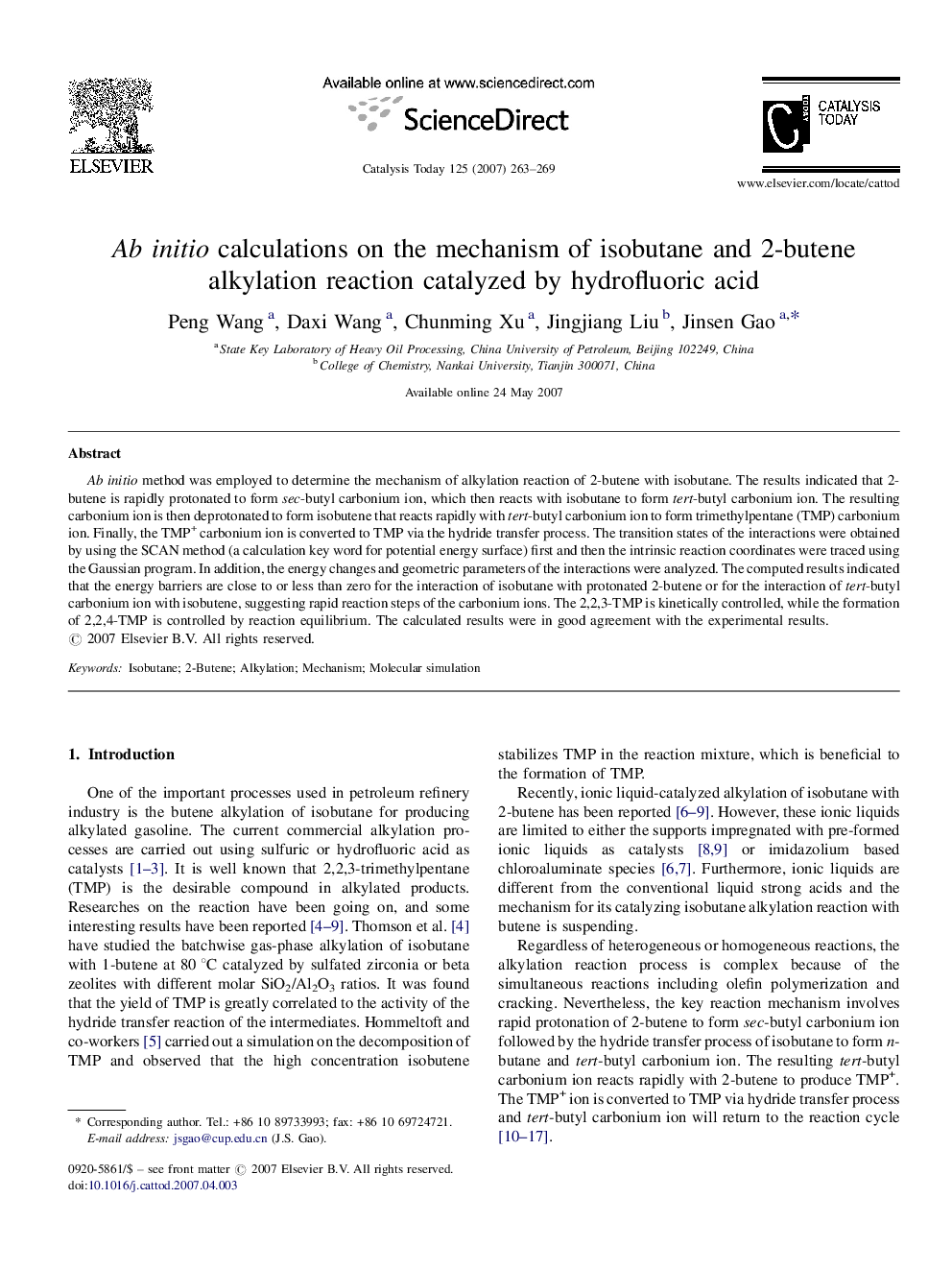| Article ID | Journal | Published Year | Pages | File Type |
|---|---|---|---|---|
| 57926 | Catalysis Today | 2007 | 7 Pages |
Ab initio method was employed to determine the mechanism of alkylation reaction of 2-butene with isobutane. The results indicated that 2-butene is rapidly protonated to form sec-butyl carbonium ion, which then reacts with isobutane to form tert-butyl carbonium ion. The resulting carbonium ion is then deprotonated to form isobutene that reacts rapidly with tert-butyl carbonium ion to form trimethylpentane (TMP) carbonium ion. Finally, the TMP+ carbonium ion is converted to TMP via the hydride transfer process. The transition states of the interactions were obtained by using the SCAN method (a calculation key word for potential energy surface) first and then the intrinsic reaction coordinates were traced using the Gaussian program. In addition, the energy changes and geometric parameters of the interactions were analyzed. The computed results indicated that the energy barriers are close to or less than zero for the interaction of isobutane with protonated 2-butene or for the interaction of tert-butyl carbonium ion with isobutene, suggesting rapid reaction steps of the carbonium ions. The 2,2,3-TMP is kinetically controlled, while the formation of 2,2,4-TMP is controlled by reaction equilibrium. The calculated results were in good agreement with the experimental results.
